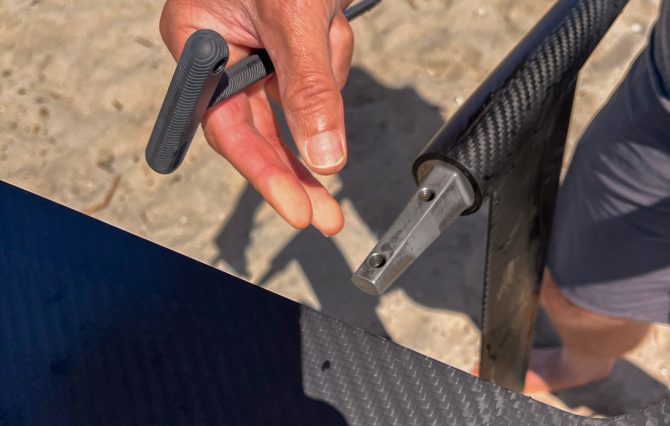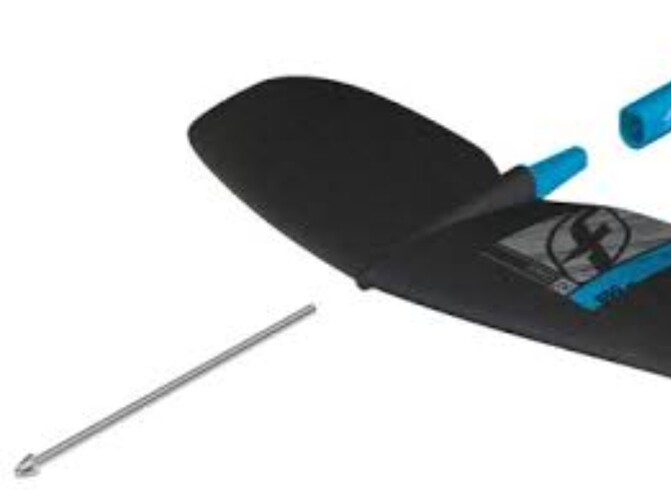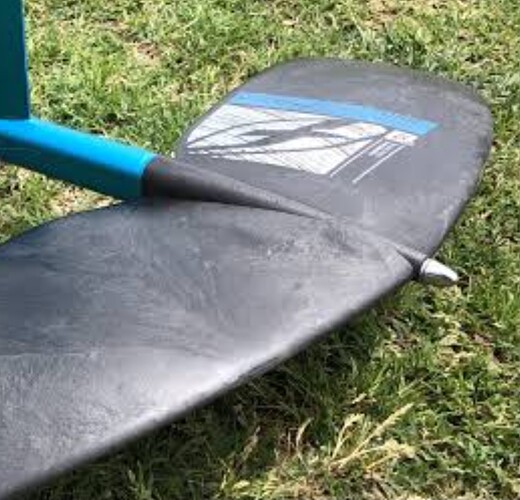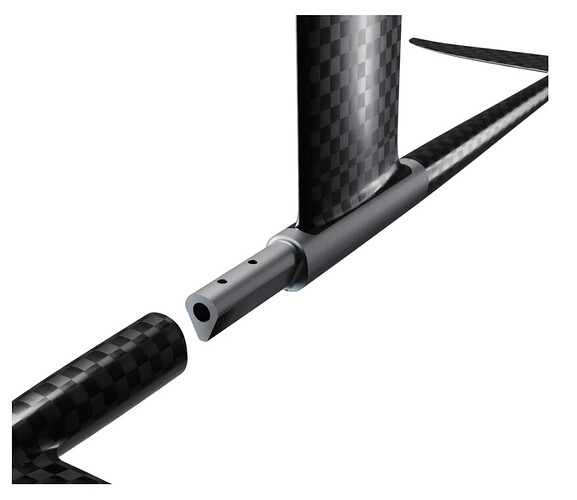And the Cabrinha is a “conical” (non-parallel) socket.
Considering most foil brands have been through multiple generations of connections, it’s pretty optimistic that they would standardize across brands…
Here are all the possible connections:
- Board-to-baseplate (or tuttle doodad)
- Baseplate-to-mast
- Mast-to-bottom adapter/doodad
- doodad(or mast)-to-fuse
- fuse-to-FrontWing
- FrontFuse-to-RearFuse
- Fuse-to-stab
Did I miss any?
So all manufacturers have #1?
All aluminum masts, but no carbon masts, have #2?
Cedrus, Axis aluminum, etc have #3?
Most (but not Armstrong), have #4?
Most, but not AK, have #5?
Gong, but not most, have #6?
Most, but not Gong, have #7?
No manufacturers (I hope) have ALL 7?
It seems like you’d need a minimum of 3 connections to allow for transport?
I’m going to add a tab to this spreadsheet for connection types, so we can attempt to track them all:
Looks like Lift is releasing a click in system for the fuse to mast and mast to board interface: https://youtu.be/q4F-eAEpkZw
The Flitelab fuse is titanium? Is the foil insert? Any thoughts on how this works? It seems like titanium structural interfaces are probably the way forward, also allows for more freedom with adaptors
Yes, titanium seems like a great choice. I wonder if we’ll find its limits fast, or if there is enough strength to push the connections/profiles to the point they don’t need to be thinner profiled.
Also if other manufactures have gone down this road already, have they found those limits.
I still like a foot style front wing connection instead of the conical style. But time will tell if one is overall better than the other.
I know this isn’t fair since I haven’t actually tried it, but this photo is giving me takuma flashbacks - and not in a good way
Yeah I don’t trust anyone on stiffness - especially how this is looking - I don’t care how many pros vouch for it. Until someone lets me put hands on it I’m not gonna trust a word
Titanium would help to reduce wear, but this design still has no (bolt) force tightening the connection. A few microns offset or wear on the bolt hole or thread and it’s all loose again.
that was what I was wondering, seems like a screw on the front to bed it down rather than screws on the side.. seems like an improvement on gofoil and armstrong where the male part is carbon
Gong V3 is pretty awesome.
Obviously fast enough for racing and strong enough for jumping.
Titanium fuse with Tuttle like connection to mast, triangular front and back self tightening for front foil and stab, Gofoil style but triangular. And it’s very affordable.
I bought a Gong V3 dock start kit with the HM70 mast. Super solid, nice fit and finish. Stiff, no play in the connections. But it’s a heavy beast, and I suspect the titanium fuse is a big reason. Also keeps shearing the bolts on the front wing mount for some reason. So yeah, looks good on paper, but definitely not a silver bullet.
That’s weird. It’s there a play between the foil and the fuse connection to break those bolts?
Exactly. Something like the Fone IC6 connection. Doesn’t have to be that long bolt on shorter chord foils. And M6 would be enough to seat it.
Eeeeewwww, yuck. I can’t even explain why I hate it, kind of like I can’t explain why snakes creep me out. It just looks yucky.
The connection itself feels rock solid, so it’s not coming from it being loose. What happens is the bolts bend a little at the head every session until they eventually shear. I asked Gong support but didn’t really get an answer—or a replacement. Tried titanium bolts, but those snapped almost instantly. I only dock start in fresh water, so in the end I just went with regular steel bolts. Turns out they actually handle whatever’s going on better than stainless or titanium. I’ve since moved on from gong and just use the same foils I wing on for dock starting. That said, the gong sirus xxl was ridiculously easy to learn on, so in hindsight I’m still really happy with the purchase.
how do they bend if it is rock solid?
Pic for reference. Feels unlikely considering this approach is pretty common across a few
Not discrediting you btw just wondering
I’m also curious about the root cause. On paper the design looks great (just a bit heavy), so it really surprised me when it started happening. Switching to steel bolts more or less solved it, and since Gong didn’t seem too keen on digging into the issue I just moved on and focused on having fun on the water. Eventually passed the xxl on to a friend at a hefty discount.
I wonder if the connection itself is fine but there must be a twist in the carbon of the front foil connection itself under load. That would twist the bolts.
It could also be that the tapped holes are slightly out of alignment and cause a load on one side of the head of the screw as it seats.
I’d look really close at how the fit is without screws, the alignment of the threaded holes including the angle in relation to the fuse.
A machining center head that was just slightly out of calibration when cutting the fuse could cause this easily, but still potentially pass a QC check.




